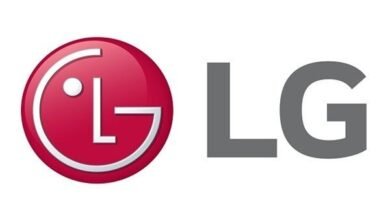Pure Storage Boosts Cyber Resilience with New Innovations & Partnerships

▼ Summary
– Pure Storage has announced platform innovations and partner integrations that significantly improve cyber resilience against sophisticated threats.
– The standard multi-vendor cyber defense approach is ineffective, leaving organizations vulnerable without native storage-layer threat detection.
– Pure Storage’s Enterprise Data Cloud enables centralized management of data across on-premises, public cloud, and hybrid environments.
– New partnerships with CrowdStrike and Superna provide real-time threat detection and automated response capabilities at the data layer.
– Recovery solutions with Veeam and Pure Protect Recovery Zones enable faster, isolated recovery environments to minimize downtime during cyber incidents.
Pure Storage is strengthening organizational defenses against sophisticated cyberattacks through new platform innovations and strategic security partnerships. These enhancements focus on creating a unified strategy that allows businesses to proactively identify threats, shield their systems from damaging intrusions, and restore operations with greater speed and confidence.
Traditional cybersecurity models often fail because they treat storage as a separate, passive component. This fragmented approach, which layers multiple vendor solutions without integrating the storage platform, creates dangerous blind spots. Critical threat indicators hidden within data can go unnoticed. Pure Storage now embeds native threat detection directly into the storage layer, enabling faster identification and remediation of attacks before they can paralyze essential infrastructure. The platform’s capabilities are further amplified by a broad ecosystem of partners, integrating leading cybersecurity and data protection tools.
This announcement extends the foundation laid by the recent Enterprise Data Cloud (EDC) introduction. The EDC architecture provides a modern framework for tackling complex data management needs. It allows IT teams to centrally oversee a virtualized data cloud with unified controls, spanning on-premises, public cloud, and hybrid setups. This facilitates intelligent, autonomous data management and consistent governance across the entire IT environment.
According to Charles Giancarlo, Chairman and CEO of Pure Storage, “The platform turns your global storage environment into an Enterprise Data Cloud, directly supporting your AI and data security initiatives. Data architecture is a strategic choice. Leveraging data effectively, and ensuring teams can manage and secure it across their entire global data estate, is fundamental to business success.”
Building an extended threat detection network is crucial for halting attacks before they propagate. As ransomware and other threats grow more active, the storage platform must evolve into a dynamic part of the security architecture, capable of identifying and neutralizing dangers at the data layer. Pure Storage is developing this network to enable two-way sharing of threat intelligence with its partners. These detection features integrate smoothly into the security tools and workflows already in place.
A key partnership with CrowdStrike integrates Pure Storage array data directly into the Falcon Next-Gen SIEM. This collaboration, expected to be generally available in Q3 of FY26, provides real-time visibility and automated response mechanisms for mission-critical storage. Joint customers can instantly update security policies, isolate compromised systems, and secure data replication to prevent attacks from disrupting vital operations.
Another integration, now available with Superna, delivers specialized file and user monitoring and remediation. This solution targets specific attack vectors like data exfiltration and double-extortion ransomware. Working with Pure Storage FlashArray and FlashBlade, Superna Data Security Essentials offers automated, real-time threat detection and response at the data layer. The system can instantly lock compromised accounts upon detecting malicious activity and automatically enforce security protocols.
When an attack occurs, the primary cost is often operational downtime. Companies need assurance that their applications can restart securely and that backup data is reliable and uncorrupted. Recovery solutions must be flexible, dynamically adapting to the specific circumstances of an incident to maintain business continuity.
A new service developed with Veeam, scheduled for general availability in Q4 FY26, offers cyber resilience as a service. Designed for organizations seeking simplicity and guaranteed outcomes, this partnership provides comprehensive, fleet-wide visibility, automation, and clean data recovery across the enterprise. The service follows a cloud-like consumption model and is backed by service level agreements (SLAs), enhancing security, speeding up recovery times, and lowering the total cost of ownership.
The introduction of Pure Protect Recovery Zones, expected in Q1 FY27, allows for the automatic provisioning of isolated, clean recovery environments. These Isolated Recovery Environments (IREs) enable businesses to safely test and validate applications and data, or to remediate and recover from malicious attacks, all without any disruption to the live production environment. The capacity to immediately restore mission-critical applications during a cyber incident significantly reduces operational impact and associated stress.
Enterprises face a wide spectrum of risks, from malicious threat actors to natural disasters and simple human error. They require solutions that not only protect valuable data but also restore it rapidly after an incident. A modern storage platform must be built on an infrastructure with inherent cyber resilience, one that can also adapt to the constantly shifting demands of the digital era.
(Source: MEA Tech Watch)





